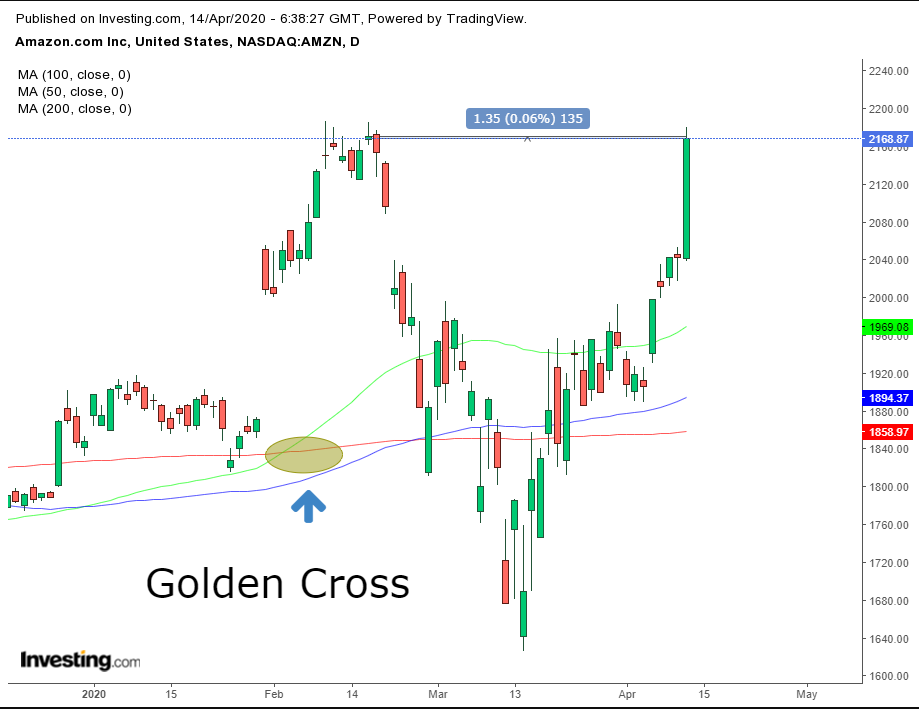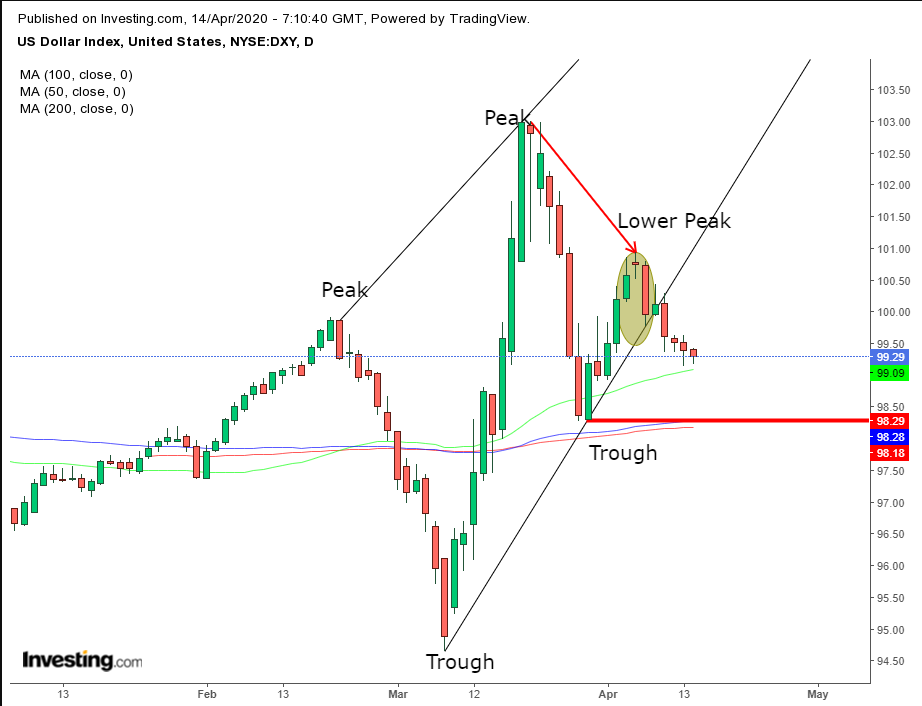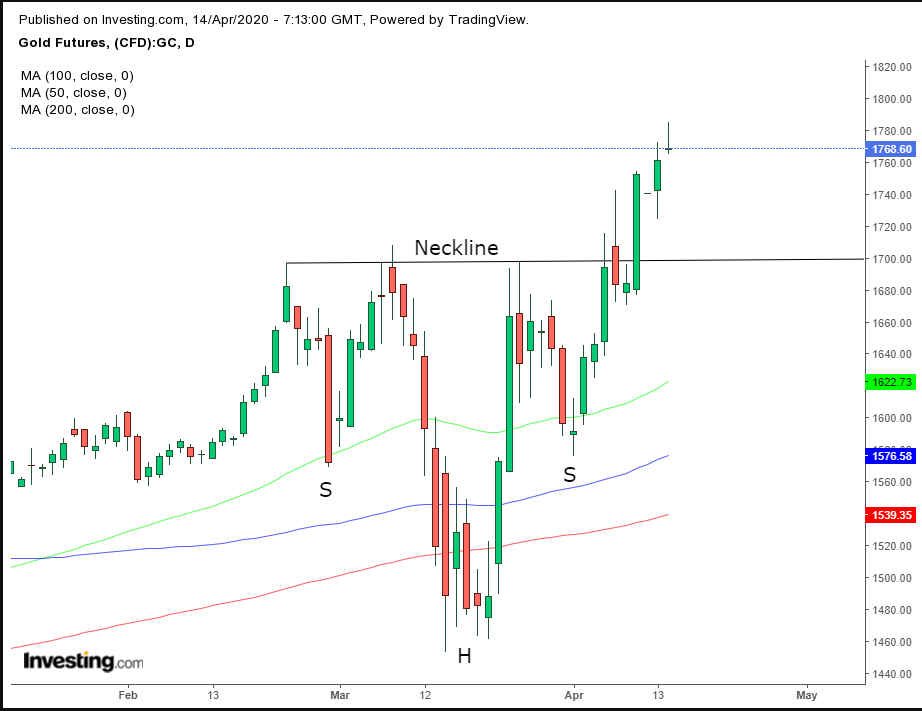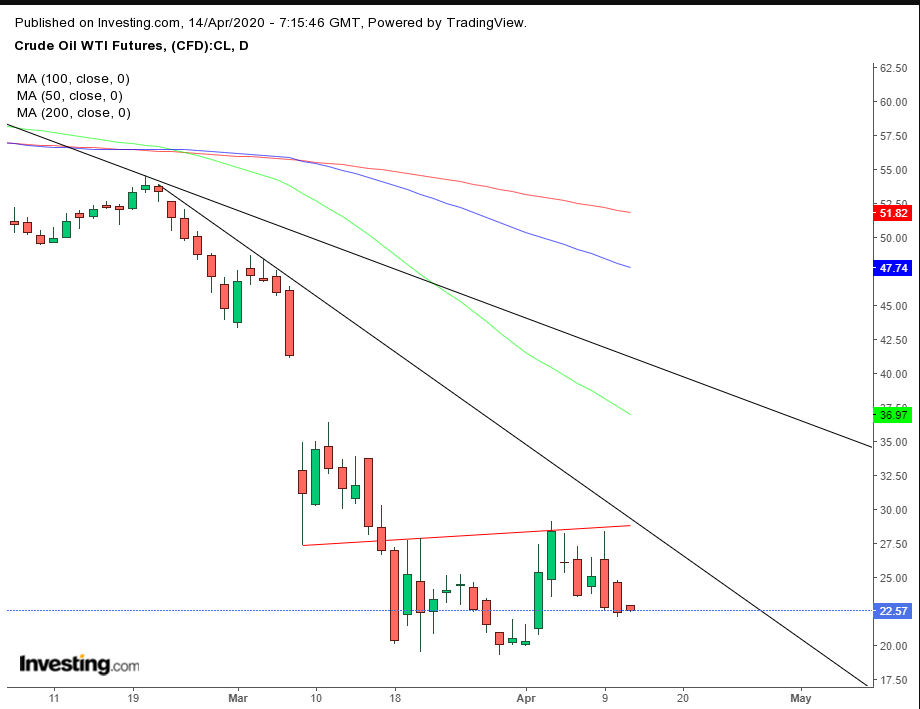- All four major U.S. contracts gain over 1%; NASDAQ futures near 2%
- Dollar edges lower, extending a drop
- Oil prices remain precarious
- U.S. banks and financial institutions begin reporting Q1 2020 earnings on Tuesday, led by JPMorgan (NYSE:JPM). Others, including Bank of America (NYSE:BAC), BlackRock (NYSE:BLK) and Goldman Sachs (NYSE:GS) will release results through the week.
- South Korea holds parliamentary elections and the Bank of Canada has a rate decision due on Wednesday.
- Also Wednesday, U.S. Retail Sales for March will print; expectations call for a record decline.
- On Friday, China releases GDP, Industrial Production, Retail Sales and unemployment figures.
- S&P 500 futures rose 1.6%.
- Japan’s Topix added 2.1%.
- Korea’s KOSPI gained 2%.
- Hong Kong's Hang Seng Index climbed 0.9%.
- The Dollar Index fell 0.1%.
- The euro rose 0.3% to $1.0946.
- The Japanese yen climbed 0.1% to 107.71 per dollar.
- The offshore yuan was little changed, trading at 7.0497 per dollar.
- The yield on 10-year Treasuries was little changed at 0.77%.
- West Texas Intermediate crude rose 0.8% to $22.58 a barrel.
- Gold rose 0.1% to $1,716 an ounce.
Key Events
Contracts for the S&P 500, Dow Jones and NASDAQ, along with stocks in Europe and Asia, all advanced on Tuesday, on light volume. This display of risk-on vigor occurs even ahead of, arguably, the most unpredictable earnings season in market history which begins in earnest later today. Of course, the biggest global risk, the continuing spread of COVID-19, remains a factor too; as of this writing, total confirmed cases worldwide are over 1,921,000 and the number of fatalities is at 119,730.
The U.S. dollar was sold off for a fourth straight day. Gold headed toward $1,800.
Global Financial Affairs
U.S. futures took advantage of trading volume that was more than 30% below average for most Asian markets. Contracts on all four major U.S. indices jumped more than 1% this morning, with the Russell 2000 futures outperforming, posting a 1.9% gain, at the time of writing.
In addition, European futures rose, with the Euro Stoxx 50 up 0.3%. France’s CAC 40 led the charge, surging 1.6%, while the German DAX was sluggish with just a 0.2% advance.
Asian digital boards all flashed green as well, with regional markets rebounding after China trade data beat expectations, even amid ongoing concerns over the economic impact of the pandemic. China’s March exports dropped only -6.6%, a fraction of the -14% plunge expected. The mainland's Shanghai Composite gained 1.59%, Australia's ASX 200 rose 1.87% and Japan’s Nikkei 225 surged a whopping 3.13%.
Yesterday on Wall Street, American equities dropped, ahead of the great unknown of upcoming earnings results and of course the continuing spread of coronavirus. Financial institutions are the highest profile reports this week, including from mega cap lenders such as JPMorgan Chase (NYSE:JPM), Citigroup (NYSE:C) and Wells Fargo (NYSE:WFC).
Still, the S&P 500 closed well above the day's lows, trimming losses to 1% from an earlier 2.5% decline. Technology (+0.22%) and Communication Services (+0.15%) were the only sectors in the green. As a result, the tech-heavy NASDAQ Composite gained 0.57%, even as the other three major indices declined.
Nevertheless, equities have inexplicably ended a bear market in a record three weeks and started a new bull run, even with so many looming risks on the horizon and as the U.S. endures its worst unemployment since the Great Depression. There's one substantial difference between then and now, however: the gold standard. Now, the USD is backed only by the Fed's largess as it provides the QE stimulus manna to increasingly fearful investors. We can't help but wonder if markets will eventually demand real 'food.'
One tech giant currently being 'nurtured' significantly by current lockdown fundamentals is e-tailer Amazon (NASDAQ:AMZN).

Shares of the online retailer surged more than 6% yesterday, reaching to within 0.06% of its Feb. 19, $2,186 record close, as it gobbles up all the business that normally would have gone to shuttered brick-and-mortar stores.
Yields, including for the 10-year benchmark Treasury note, were flat and the dollar slipped.

The USD extended its selloff for a fourth day, after falling out of its rising channel. The decline comes on the heels of an Evening Star, when the global reserve currency failed to post a new peak within the uptrend, in which it remains, until it falls below 98.00.
Gold neared the $1,800 mark for first time since the first week of October 2012.

However, the precious metal retreated from its highs and is forming a shooting star, bearish upon a close. This could be the signal for the pullback that generally follows the breakout of the H&S bottom.

Oil crept higher following this week's OPEC+ production cut agreement. However, the reductions agreed upon fell below the anticipated mark and are not expected to hold if prices rebound and the possibility of increasing market share by producers becomes too tempting. Technically, the price of the commodity is ranging. A close above $30 would complete a bottom, but at these low prices that requires WTI to appreciate by a third, which is very significant and thus less likely, for now.
